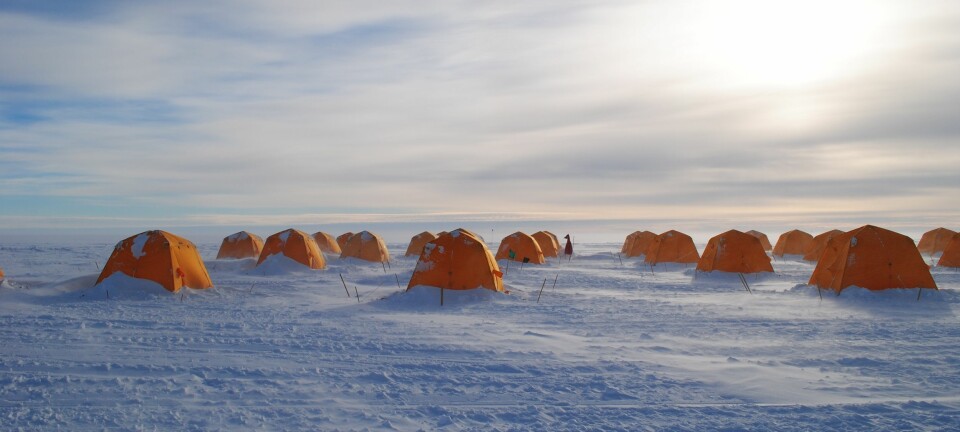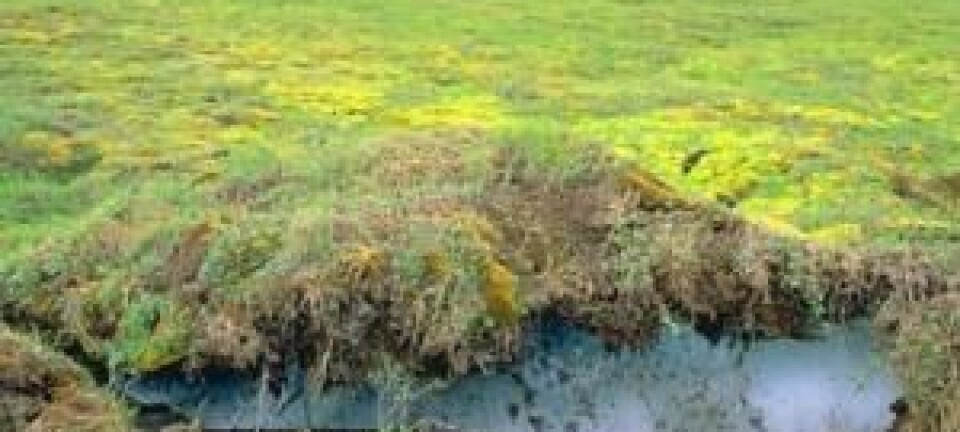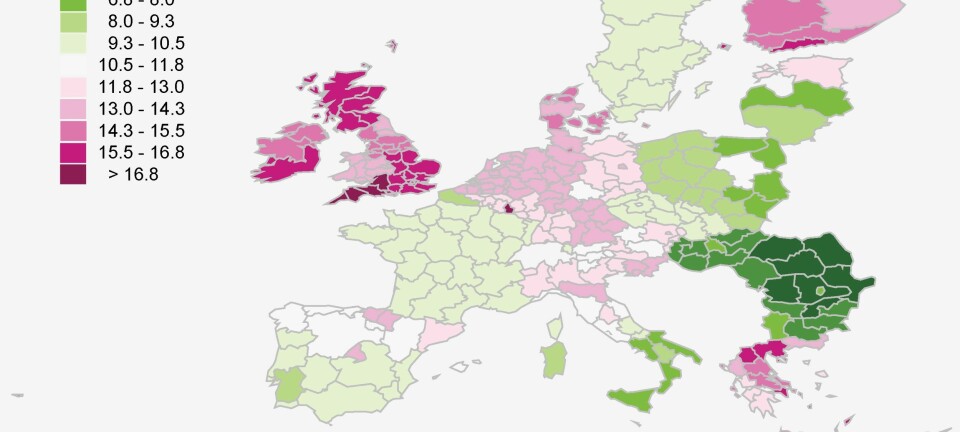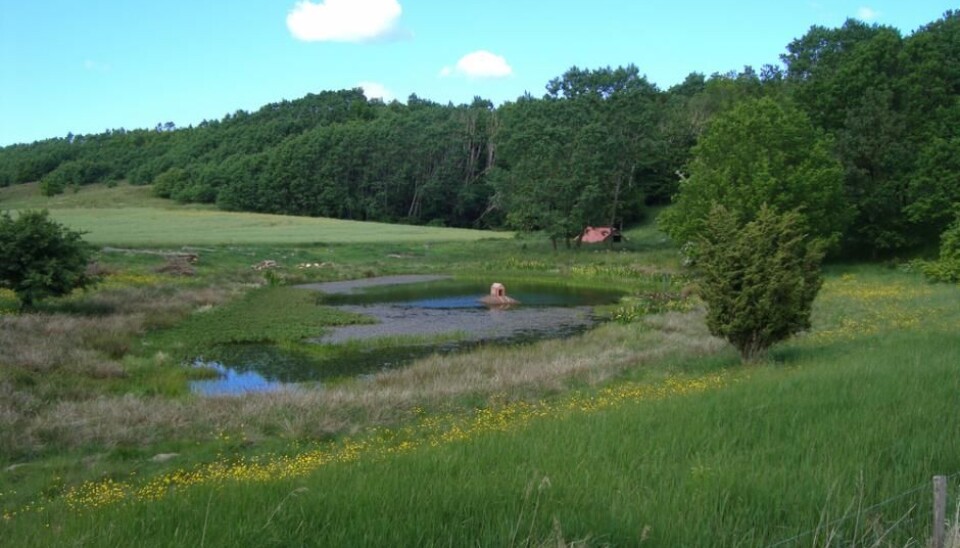
Danish "lakes" provide unique insights to climate change
Lakes release a greenhouse gas, methane, but exactly how much has been somewhat of a mystery. New research has some answers.
Twenty-four experimental lakes (mesocosms) in Jutland, West Denmark, have been under close observation by a group of scientists from Aarhus University.
Extensive experiments have provided unique insights into the amount of methane gas released over time.
After carbon dioxide, methane is the biggest sinner in global warming, but this greenhouse gas is surrounded by uncertainty and scientists do not know precisely how much methane is released by, for example, lakes.
“There is no other experiment like this one in the world, so we had the unique opportunity to investigate how temperature will affect lakes and how that might feedback to climate change,” says lead-author Thomas Alexander Davidson, senior scientist at the Department of Bioscience, Aarhus University, Denmark.
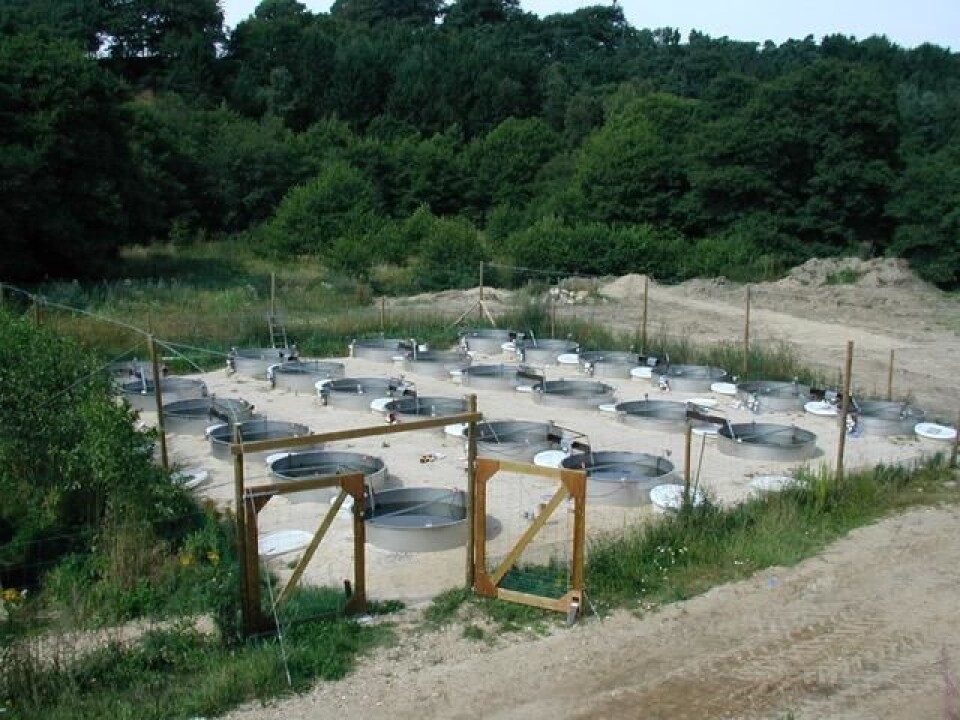
The calculations allow us to project how lake ecosystems will react to global warming with greater certainty, and how much methane could be released from lakes in the future, says Davidson.
The new study is published in the scientific journal, Nature Climate Change.
An often overlooked “accomplice” to global warming
We often read about the human influences on the climate, but not quite so much about the natural mechanisms that also play a role, says Davidson.
One of these occurs in lakes.
By collecting data over the course of one year, scientists not only know how much methane is emitted from lakes, but also how these emissions are affected by changing temperature and nutrient conditions in the lakes.
The new study identifies a striking self-perpetuating process: As the climate warms due to global warming, the natural processes in the lakes that lead to the emission of methane will strengthen and release even more methane in a vicious circle.
Read More: One quarter of the Arctic is a hotbed for overlooked greenhouse gas
Fake lakes!
Methane gas is produced at the bottom of all lakes due to the breakdown of organic material. Previous research has shown that shallow lakes emit significantly more methane compared to deeper lakes, where not as much gas reaches the surface.
To study these processes, the scientists created 24 artificial shallow lakes, which allowed them to experiment under controlled conditions.
This gave them control of parameters that could influence methane release, such as altering the lake temperature using heating equipment and changing the nutrient levels by adding varying amounts of phosphate and nitrogen.
The scientists experimented by turning up the temperature by two to three degrees in some lakes, and up to four to five degrees in others. The warmer lakes emitted more methane gas.
But it was the combination of increased nutrients and warmer lake water that led to significantly high methane emissions—at least six times higher than usual.
Here’s what happens inside the lakes:
- Warming speeds up a number of processes in the ecosystem. Bacteria process carbon more quickly, releasing more methane gas into the atmosphere.
- More nutrients caused phytoplankton (algae) growth to accelerate, soaking up the nutrients that would otherwise have been taken up by submerged plants. The algae shade the plants from light and so the plants often disappear. Crucially, these plants help to prevent the release of methane bubbles from the sediment below. So fewer plants means more methane is released from the lake.
Read More: Bacteria thrive on methane deep beneath the Antarctic Ice Sheet
How methane gas is released from the lakes
Methane gas is released from both deep and shallow lakes in two ways.
- Diffusion: For example, when the lake water contains a relatively large concentration of methane compared to the atmosphere. Methane is released until it reaches the same concentration of the atmosphere.
- Ebullition: Sediments at the bottom of the lake contain bubbles of methane. On some days lots of these bubbles are released, whereas on others, relatively few are released. Once free from the sediments, they bubble up to the surface of the water where they are released straight into the atmosphere.
The new study looks at ebullition, which is the most difficult to measure since it occurs so sporadically.
“By combining heat with high nutrient levels, we see an extremely large release of methane bubbles. Diffusion changes by just 15 per cent, but the bubbles increased by more than 300 per cent,” says Davidson.
Read More: Man has affected the climate for 2,000 years
One piece in a larger puzzle
Studying methane emissions from shallow lakes will help to narrow down all of the possible sources of methane, according to climate scientist Christian Rodehacke from the Danish Meteorological Institute.
“The sum of all methane emissions that we can measure from a range of sources does not match the amount of methane gas that we measure in the atmosphere. And therefore this study could contribute a piece to the large jigsaw puzzle so that we can better calculate the influence of lakes on the climate,” says Rodehacke, who was not involved in the study.
Lakes warm up faster than the atmosphere and the ocean--and how much methane gas they could release as a result has remained an unanswered question.
Read More: Getting the full picture on greenhouse gases
What can we do?
The question is now: Can we do anything to prevent these natural processes from contributing further to global warming?
Yes, says Davidson.
“We can protect plants by not introducing so many nutrients into the water. We can do that by regulating the release of fertilisers from farming,” he says.
We can also halt global warming, but that is a bigger project.
For Davidson and his team, the next step is to study methane bubbles in natural lakes of different climates and nutrient levels, and to understand precisely how plants prevent the release of methane.
---------------
Read this article in Danish at Videnskab.dk
Translated by: Catherine Jex

